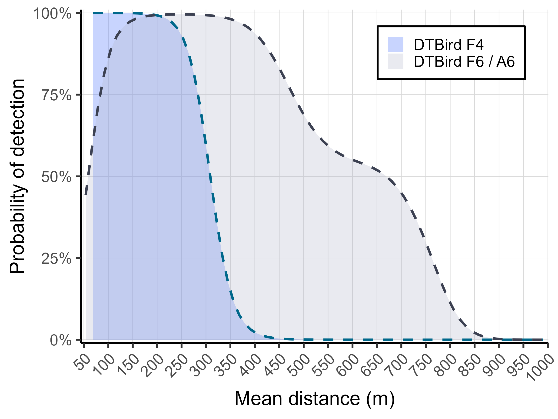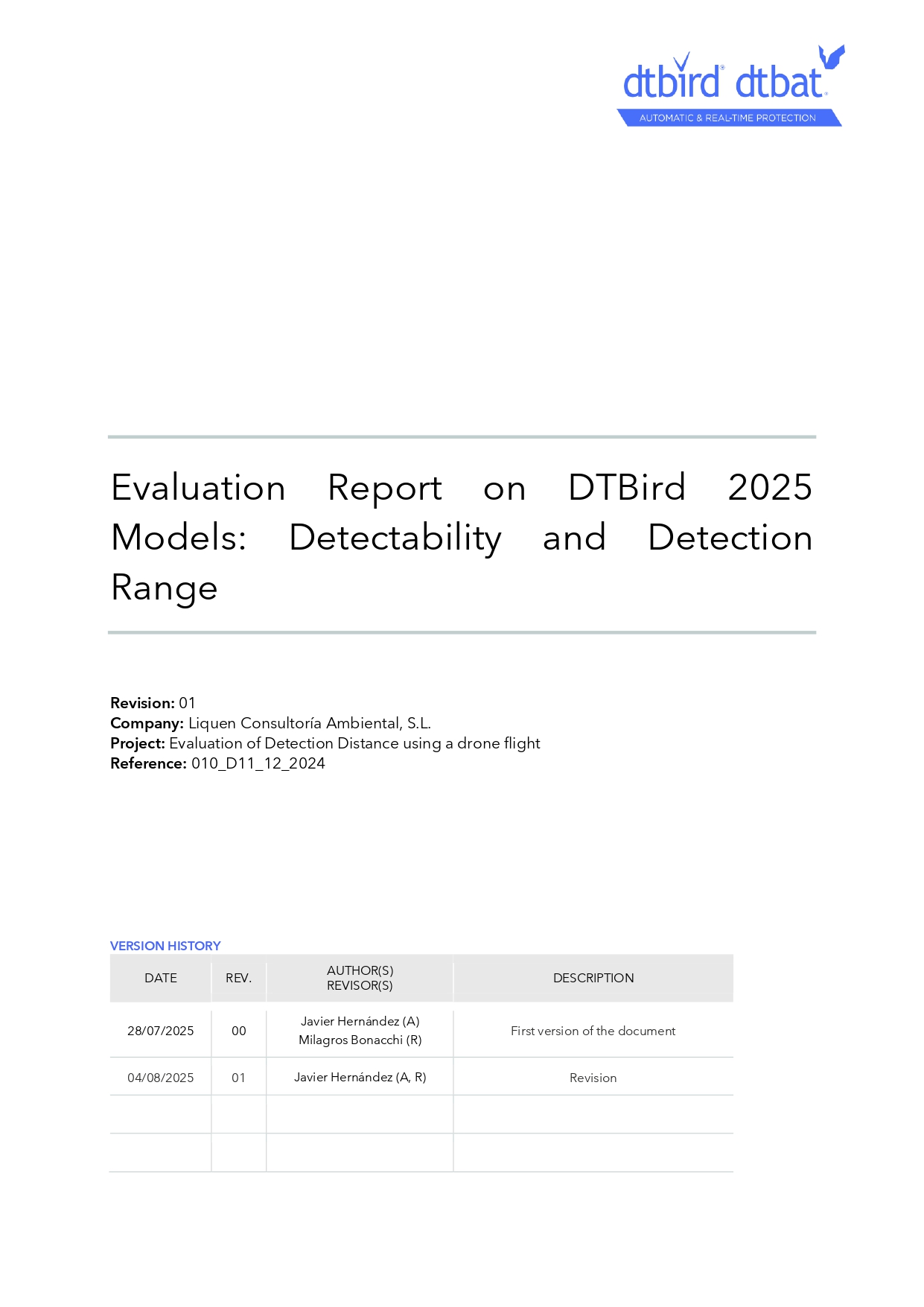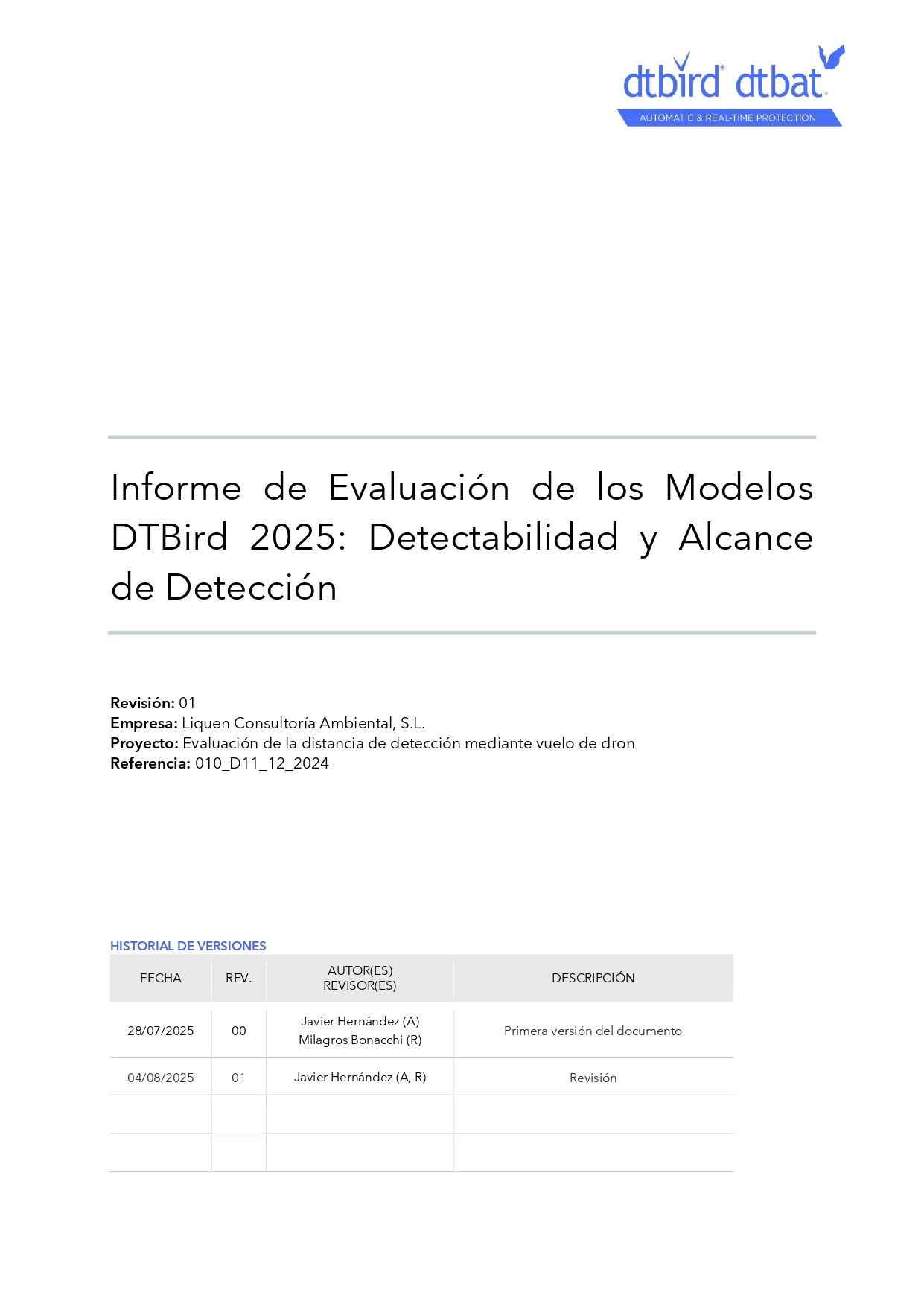DTBird® has released the results of an independent study evaluating the detection capabilities of its latest bird monitoring models (F4, A4, F6, A6, and T). The assessment, conducted by the company, used a controlled field methodology to objectively measure maximum and effective detection distances for each model, providing wind farm operators and environmental managers with transparent, verifiable performance data.
The evaluation involved controlled flights with a 1.42-meter wingspan avian-mimic drone, which simulated a medium-sized bird of prey. Flights were performed under stable weather conditions, covering a wide range of distances, angles, and trajectories. The drone’s GPS positions were synchronized with high-definition camera recordings from the DTBird® systems, allowing precise calculation of detection distances and probability curves.
The ground test provided empirical data to determine the detectability of the new DTBird models at a given distance, and the data were extrapolated for different species sizes.
See the graphic below, which shows detectability features for a bird with a 2 m wingspan for models DTBirdF4/A4 and DTBirdF6/A6. For DTBirdF4/A4, the maximum detection distance is about 400 m, with detectability over 90% between up to 240 m. In contrast, DTBirdF6/A6 has a maximum detection distance near 800 m, maintaining over 90% detectability from 100 to 400 m.

"For years, the wind energy sector has sought independent, field-verified data on bird detection technologies," said a DTBird® spokesperson. "This study provides the transparency our clients need to make informed decisions, while reaffirming DTBird®’s commitment to bird protection for both onshore and offshore wind projects."
Check the document below in English and Español!


Bilingual DTBird® Detectability and Detection Distances Report.





